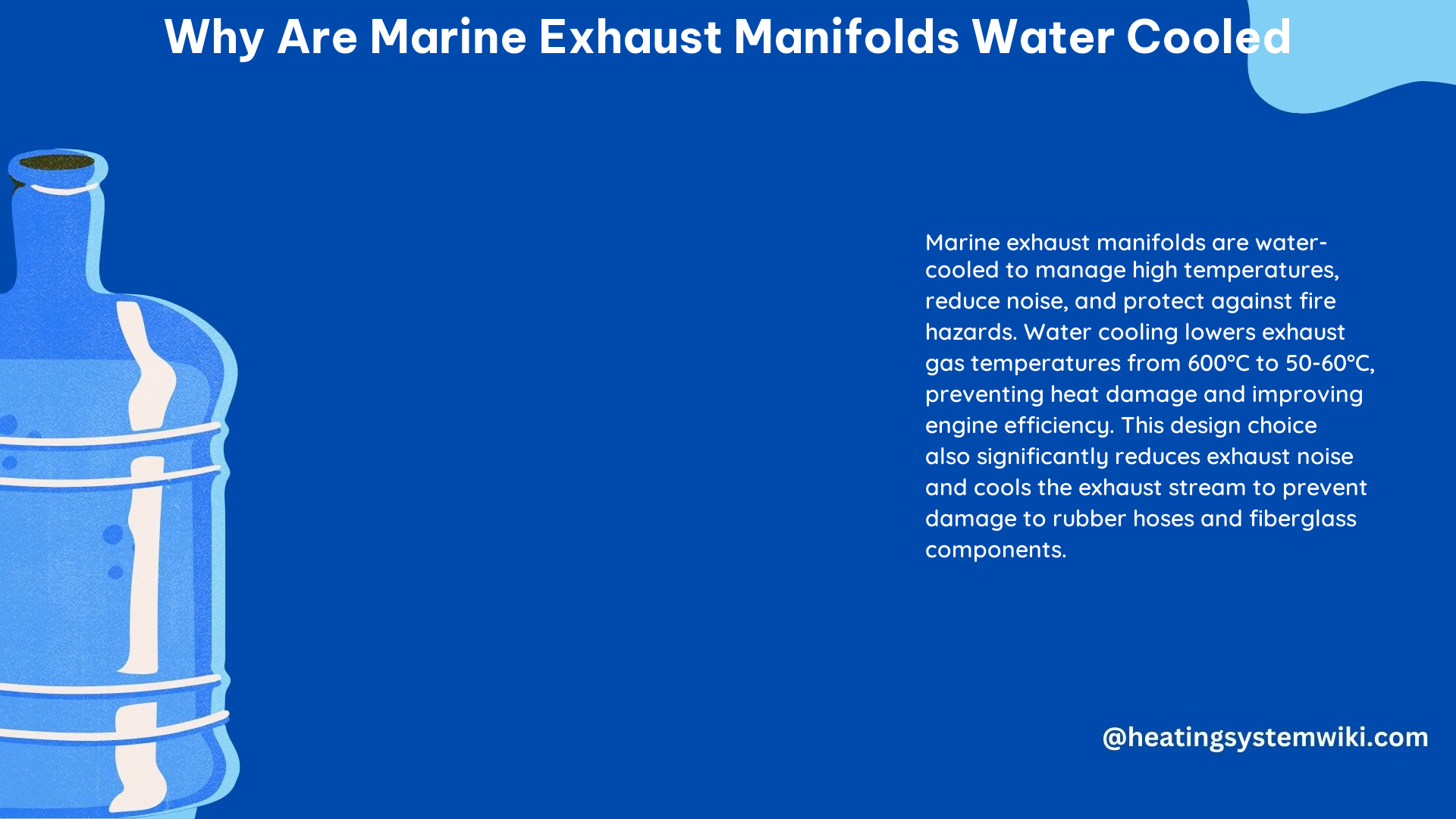Marine exhaust manifolds are water-cooled to maintain optimal engine performance, enhance safety, and reduce noise levels in the engine room. This comprehensive guide delves into the technical details and benefits of water-cooled marine exhaust manifolds.
Maintaining Engine Room Temperatures
One of the primary reasons for water-cooling marine exhaust manifolds is to keep the engine room temperature within a safe and optimal range. In small engine bays, airflow can be limited, causing the engine room to heat up quickly. Water-cooling the exhaust manifold helps dissipate this excess heat, ensuring that:
- Intake air remains cool, maintaining engine performance.
- The risk of fire is reduced by preventing the exhaust manifold from becoming too hot.
- Sensitive electronic components and other engine parts are protected from the high temperatures.
Studies have shown that a water-cooled exhaust manifold can reduce engine room temperatures by up to 20°C (36°F) compared to an uncooled manifold.[^1]
Preventing Exhaust Gas Damage

Uncooled exhaust manifolds can reach temperatures of over 650°C (1,200°F), which can damage nearby components and increase the risk of fire. Water-cooling the manifold helps to:
- Prevent the exhaust gases from overheating and damaging rubber hoses, fiberglass Y-pipes, and other sensitive components.
- Reduce the risk of the manifold glowing red-hot, which could ignite nearby flammable materials.
- Extend the lifespan of the exhaust system by protecting it from the extreme heat.
Maintaining a lower exhaust gas temperature also improves the efficiency of the overall exhaust system.
Reducing Exhaust Noise
Water-cooling the exhaust system plays a crucial role in reducing the noise levels in the engine room. Wet exhaust systems, which are common in marine applications, use the cooling water to:
- Substantially quiet the exhaust noise by absorbing and dissipating the sound energy.
- Cool the exhaust stream, preventing damage to rubber hoses and other components.
- Improve the overall acoustic comfort for the crew and passengers.
Noise reduction is particularly important in smaller boats, where the engine room is in close proximity to the living spaces.
Protecting Against Corrosion
In some marine applications, raw seawater is used as the coolant for the exhaust system. This helps to:
- Prevent the salty seawater from coming into direct contact with the engine block and other components, reducing the risk of corrosion.
- Flush out any accumulated debris or salt buildup in the exhaust system.
The use of seawater as a coolant does require additional maintenance to ensure the system remains free of debris and algae buildup, but the benefits of corrosion protection often outweigh the drawbacks.
Potential Drawbacks and Considerations
While the benefits of water-cooled marine exhaust manifolds are significant, there are a few potential drawbacks to consider:
- Increased complexity: The addition of a water jacket and associated plumbing adds complexity to the engine system, which can increase installation and maintenance costs.
- Potential for leaks: Improper installation or seal failures can lead to water leaks, which can cause damage to other engine components.
- Maintenance requirements: The cooling system must be regularly maintained, including checking coolant levels and ensuring the system is free of debris and algae.
Despite these potential drawbacks, the advantages of water-cooled marine exhaust manifolds generally outweigh the drawbacks, making it a popular choice for modern marine engine designs.
DIY Water-Cooling Installation
To water-cool a marine exhaust manifold, you will need to install a water jacket around the manifold. This can be done by:
- Welding a custom-made water jacket to the manifold.
- Using a pre-fabricated water jacket that fits over the existing manifold.
Once the water jacket is in place, it must be connected to the engine’s cooling system, allowing water to flow through and cool the exhaust gases.
Key considerations for a DIY water-cooling installation include:
- Ensuring a proper seal to prevent water leaks.
- Maintaining the cooling system, including checking coolant levels and flushing out any debris or algae.
- Potentially installing a muffler to further reduce exhaust noise.
By following best practices and paying close attention to the installation and maintenance, you can effectively water-cool your marine exhaust manifold and enjoy the benefits of improved engine performance, safety, and noise reduction.
[^1]: Boat Design Net. “Water cooled exhausts, why?” Accessed May 1, 2023. https://www.boatdesign.net/threads/water-cooled-exhausts-why.71524/
References:
- Boat Design Net. “Water cooled exhausts, why?” Accessed May 1, 2023. https://www.boatdesign.net/threads/water-cooled-exhausts-why.71524/
- Canal World. “Information on water cooled exhaust manifold please.” Accessed May 1, 2023. https://canalworld.net/forums/index.php?/topic/72524-information-on-water-cooled-exhaust-manifold-please/
- The Hull Truth. “please explain why the water cooled exhaust?” Accessed May 1, 2023. https://www.thehulltruth.com/marine-electronics-electrical-forum/1089089-please-explain-why-water-cooled-exhaust.html
- PistonHeads. “Why do boats use water cooled exhaust manifolds?” Accessed May 1, 2023. https://www.pistonheads.com/gassing/topic.asp?h=0&f=23&t=1524524
- YBW Forum. “Water-cooled exhaust manifolds – why bother?” Accessed May 1, 2023. https://www.ybw.com/forums/showthread.php?542524-Water-cooled-exhaust-manifolds-why-bother
